Notes on the Sketchbook

When we talk about the sketchbook what do we mean? Its complexity is reflected in the difficulty we experience – in many examples, at any rate – in straightforwardly attaching a name to it, for there are times it might seem to be equally a notebook, a journal, a diary, a travelogue, an aide-memoire, or even a scrapbook. Perhaps first of all it exists as a kind of place where all these things promiscuously come together and interact without classificatory separation. This is heightened by the binding together of the sketchbook’s pages in a fixed sequence. What is put into it cannot be detached and reorganized, unless artificially. Where things are put down they remain, often in strange adjacency.
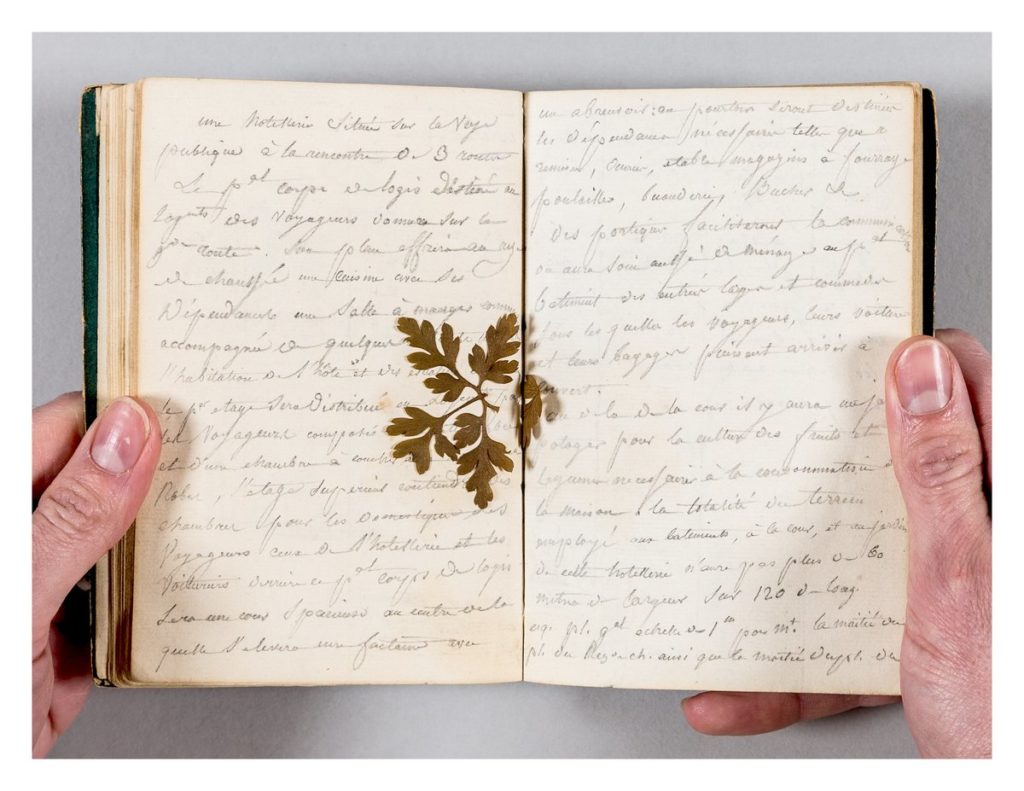
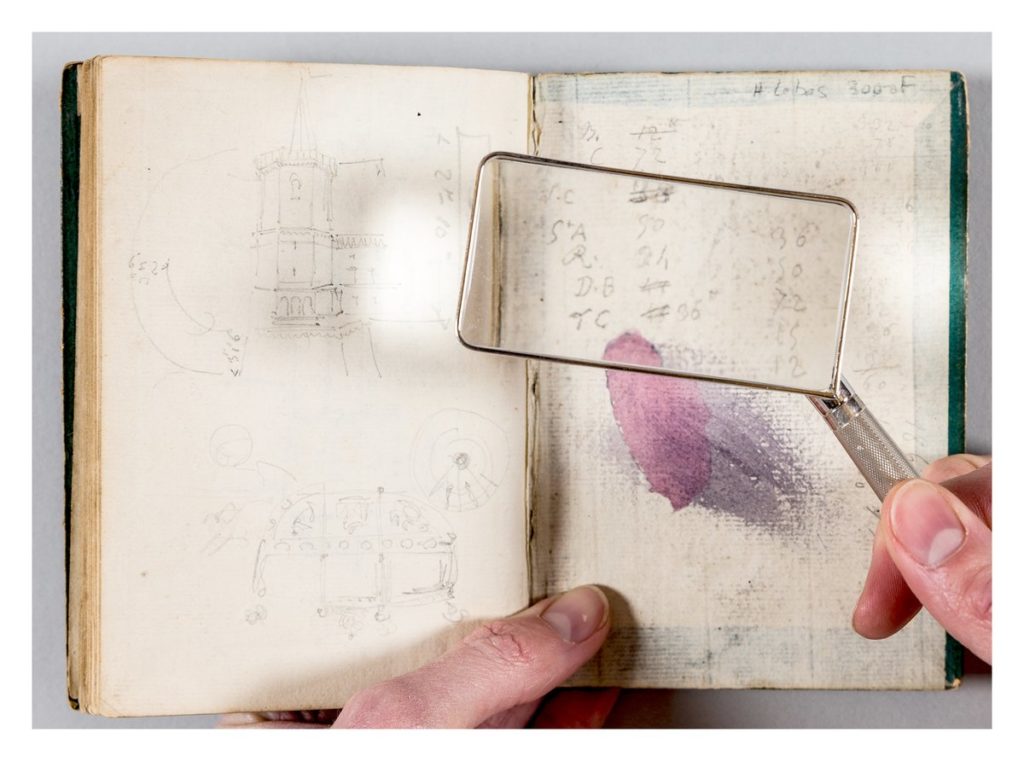
Can we say when the sketchbook begins? What is the first thing that we would describe as a sketchbook? There is a material history here, of papers, of binding, of costs, of education and travel, self-fashioning and self-reflection – and also of the interaction of the sketchbook with other materialities (pens, inks, photographs etc., as well as devices such as the camera lucida or Claude Glass). Is transit in space and time a key issue? By using the word ‘book’ we imply a binding, a fixed holding-together of sheets that would otherwise be put at risk through this movement. It is a binding in advance. Sketchbooks arrive ’empty’, they are different from folios assembled – or books bound – from existing drawings. This also tells us something about the size of sketchbooks, for to travel they have to be fitted to the body. They are to sit within the hand, and well as the pocket or valise. They are to ‘be to hand’, as well – to come quickly to hand, to be responsive, as a cloud passes across the sun, a vista is seen, or an idea emerges.
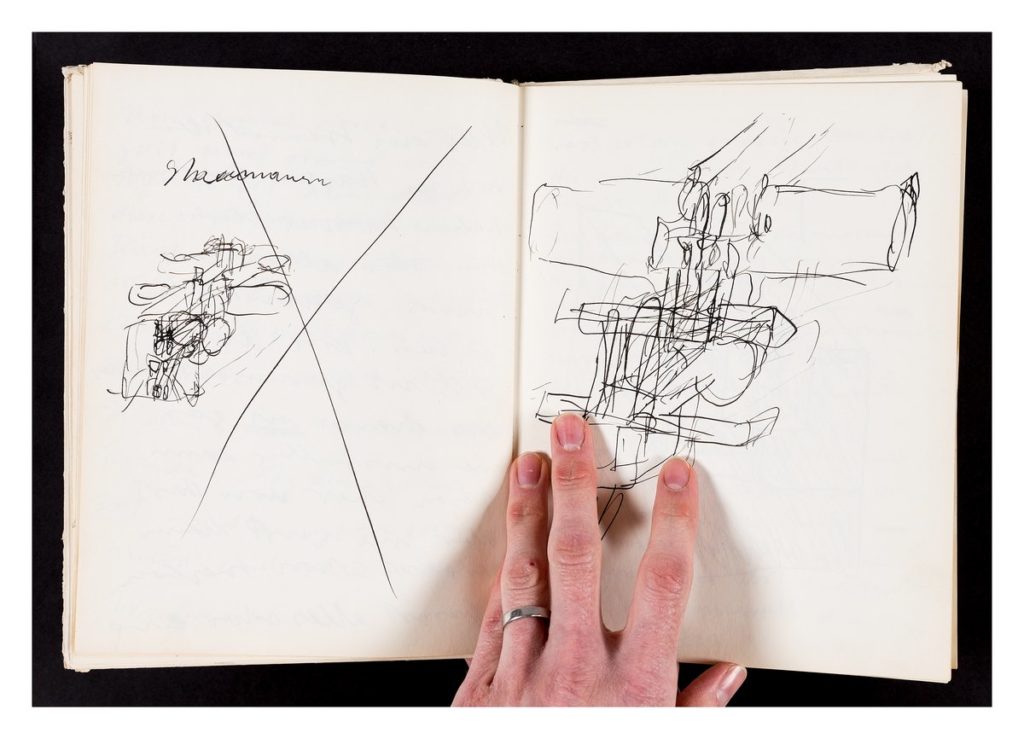
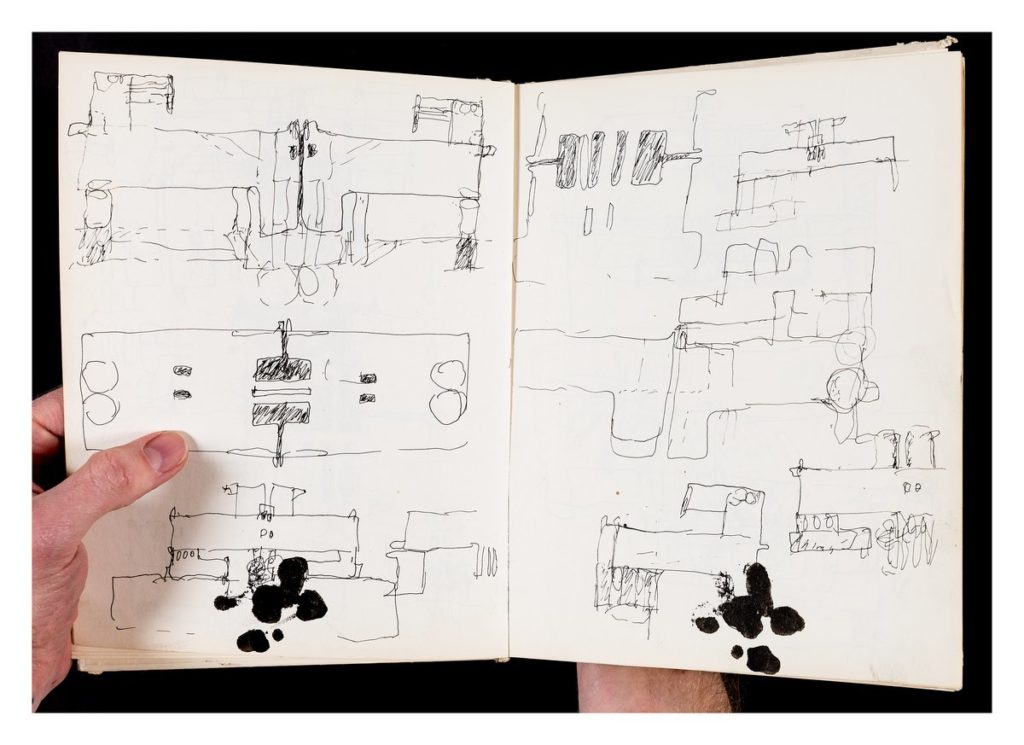
Nothing in a sketchbook is ever finished. It is not for that kind of drawing. Everything is always on the way – preparatory, exploratory, investigative. If the sketchbook is made as a physical object to be portable, equally everything in it is in some sense ‘on the move’. It is neither finalised nor made for presentation. This is one aspect of the interiority and intimacy of the sketchbook. It is where thinking, where visual thinking, edifies itself, unconstrained by the presence of an addressee. The portable character of the object is linked with the concept of the sketch, synonymous with an impression, something fleeting swiftly fixed.
The sketchbook gives us an insight into a thought process, and the way that develops through interaction with material things. It records how thinking – such as design thinking – shows itself to itself. Moreover, it lets us see how thinking grows out of the serendipitous, the unexpected and the eventful.
Perhaps we could think of the sketchbook as a kind of camera? Certainly there are affinities between the sketchbook and photography, for the sketchbook is also a kind of instrument to do with exposure times and sensitive surfaces. The book’s protective cover – characteristically hard, dark, mark resistant – is opened to reveal a soft and receptive paper interior whose exposed surfaces record, and are sometimes warped by, impressions and traces left not only by lead, ink or charcoal but also atmospheric conditions (humidity, rain, dust, sunlight, etc.) and unforeseen occurrences. These may in turn prompt explanation, commentary, or reflection – as with the burgundy-coloured stain that spreads across the page of one of Cedric Price’s sketchbooks and provokes a note on the Hungarian proprietor of the Gay Hussar, the restaurant at which the wine was spilled, and on Hitler’s vegetarianism.
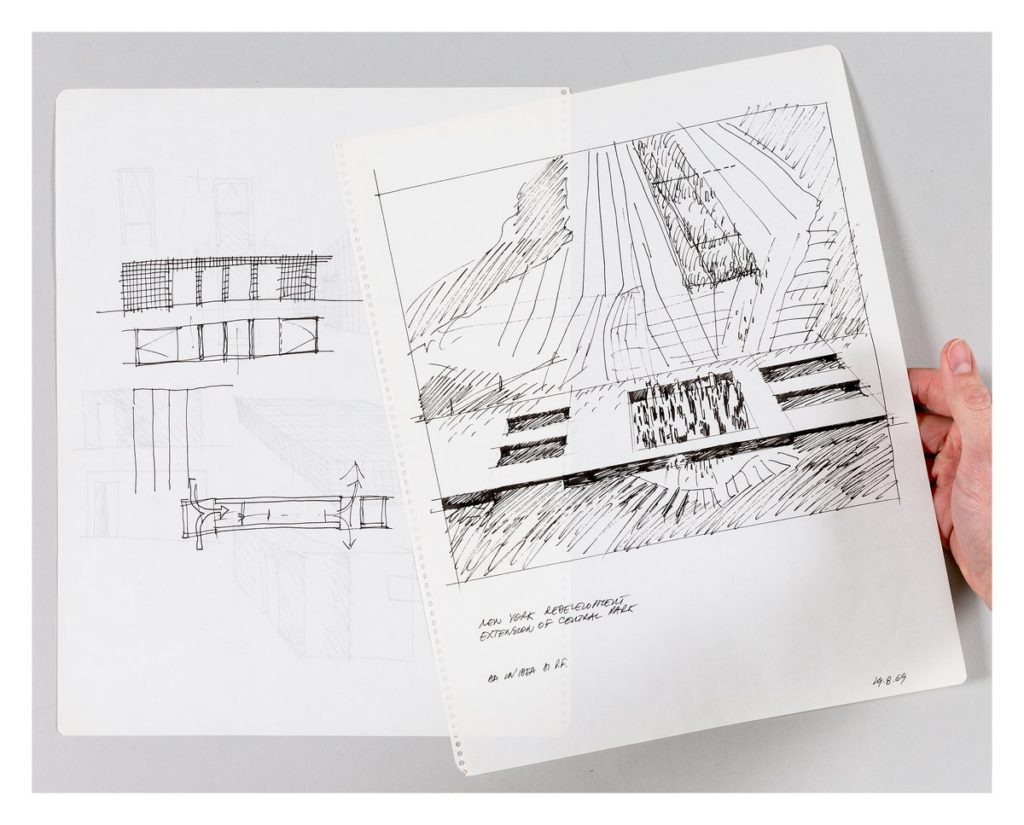
Sketchbooks are to do with seriality. Not only are pages fixed in sequence, but the books themselves come to exist in numbered sequences across years. Their intimacy leads to particular kinds of attachments (to manufacturers, papers, models, etc.) The kind of concerns that turn around the sketchbook can be similar to those to do with clothing. The seriality of the sketchbook matches that of travel, of stadial movement. The book’s structure meets with aesthetic ideologies that value sequential experience, movement, and change, such as the picturesque. Travel sketchbooks that record serial vistas that unfold in time are directly analogous to contemporary techniques such as cinematic storyboards.
But sketchbooks at times are also containers or vessels, things with a volume that hold other objects which may be inserted into them, pressed between their pages or pasted onto their sheets.
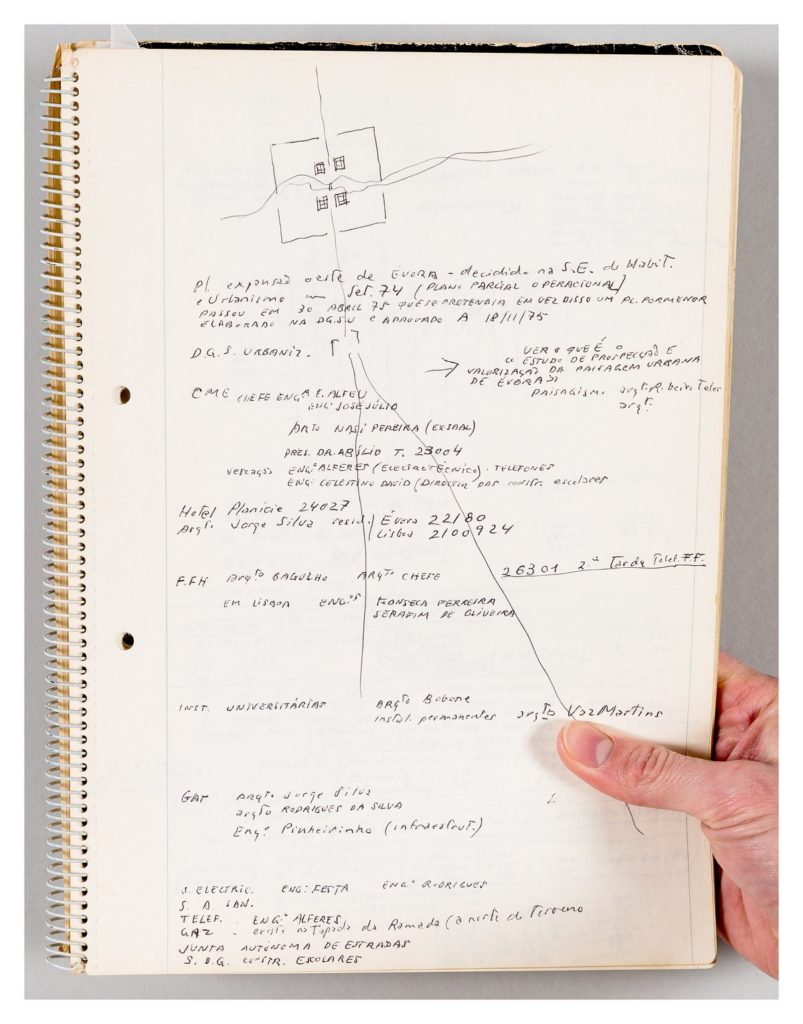
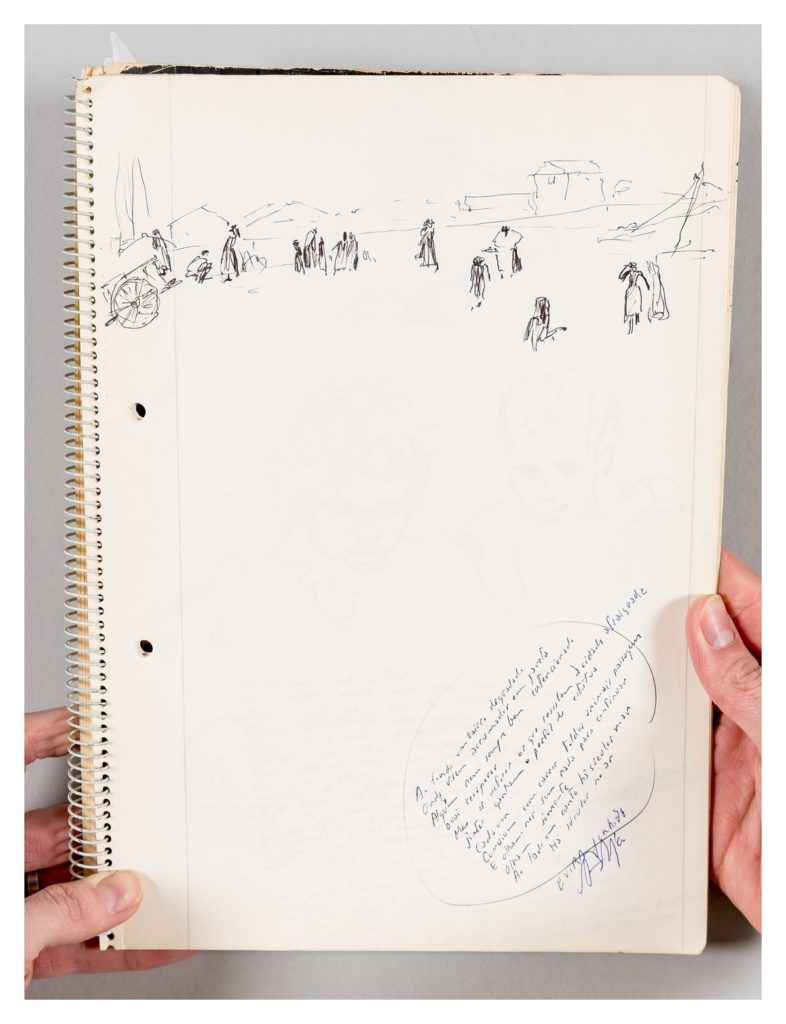
The challenge of exhibiting sketchbooks stems directly from their most characteristic traits – their intimacy, their scale, their heterogeneity and the binding of their leaves, which mean that at most two pages can be shown at any one time. The resultant danger is that this most lively of things might appear the most inert. Perhaps the main question then is how to animate the sketchbook, how to coax it to speak in an exhibition context. And maybe the complexity and heterogeneity of the sketchbook gives a clue here, insofar as different media might be used to ‘perform’ it in different ways. This could range from, for example, very large-scale reproductions of pages (which would work with the interiority of the sketchbook by effectively ‘miniaturising’ the viewer in relation to the page); to audio readings developed from the sketchbooks; to filmed encounters with, or reflections upon, the sketchbooks by commentators – as well as more familiar touchscreen interfaces which would allow the exploration of digitised versions. What is important throughout is to respect the integrity of the sketchbook as an artefact with its own coherence, albeit multifaceted and complex, and not treat it in an instrumental way as something whose value is merely explanatory.
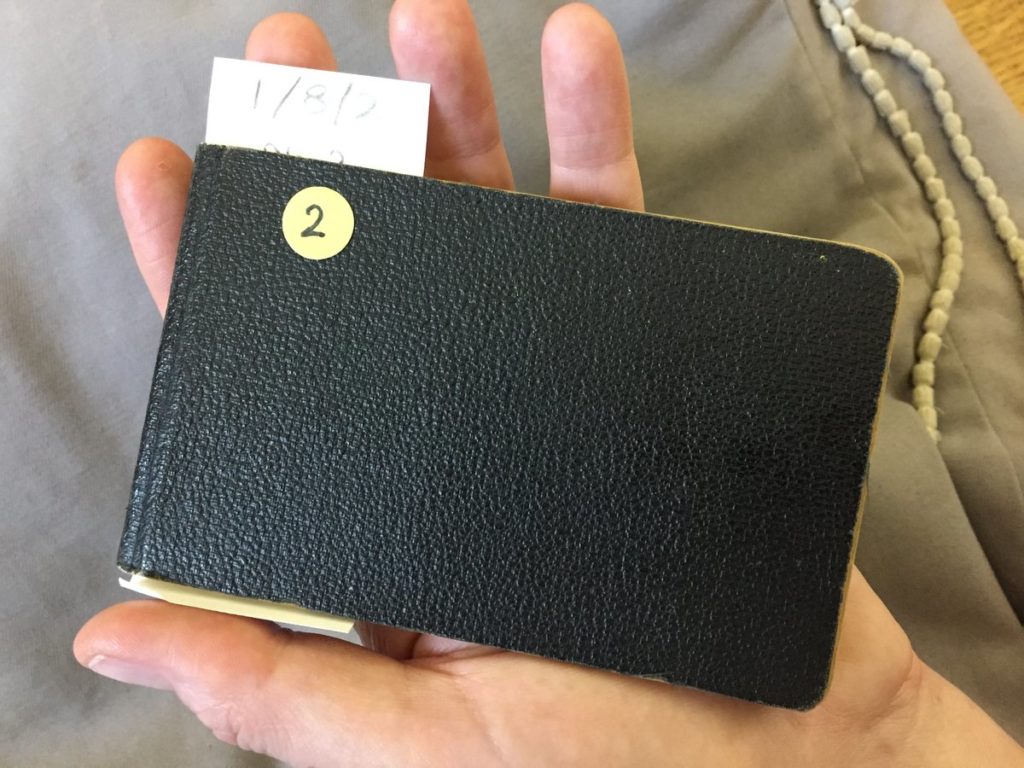

– Mark Dorrian